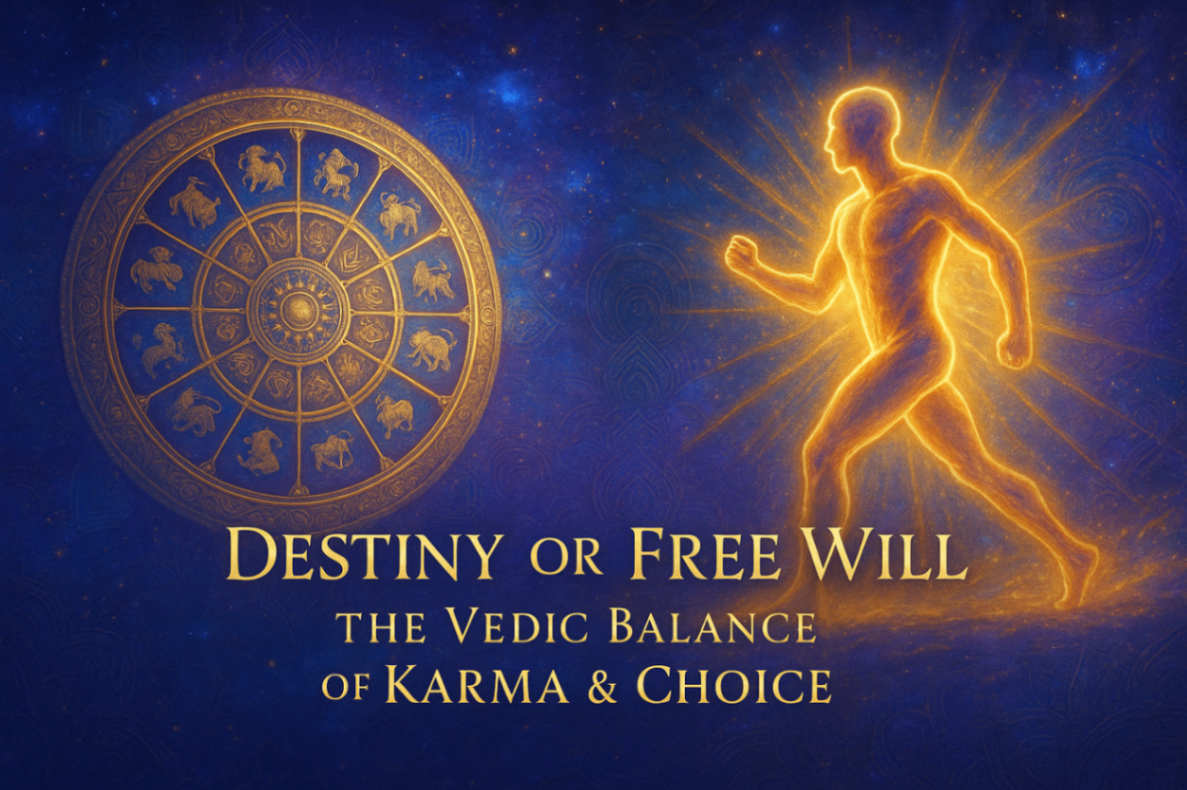Karma Theory is a fundamental concept in Vedic astrology that explains the cosmic law of cause and effect. It delves into how our actions, both past and present, shape our destiny and influence our journey through life. In this comprehensive exploration, we will unravel the intricate connections between Karma, Kurma (the tortoise), and the planets, especially Saturn (Shani). We will also discuss the different types of Karma and how they manifest in our lives, drawing insights from Lord Krishnas teachings and exploring common questions about the reality of Karma.
What is Karma? Understanding the Meaning
Karma is a Sanskrit word that translates to action in English. The karma meaning encompasses not just physical deeds but also thoughts and intentions. In essence, it is the universal principle of cause and effect, where every action has a corresponding reaction. The law of Karma dictates that good deeds lead to positive outcomes, while negative actions result in unfavorable consequences.
Karma Meaning in English and Its Significance
In English, karma meaning is often associated with destiny or fate shaped by ones actions. It is a reminder that we are responsible for our own lives and the situations we encounter. This understanding encourages individuals to live ethically and mindfully.
Who is Karma? Personification in Vedic Texts
In some Vedic texts, Karma is personified as a deity who keeps account of all actions. However, more commonly, Karma is viewed as an impersonal cosmic law rather than a being. Therefore, asking who is Karma leads us to understand that it is not a deity but a principle that governs the universe.
The Connection Between Karma and Kurma
Karma Theory sees the closeness between the words Karma and Kurma. See how close they are; therefore, there must be a link between Karma and Kurma. Kurma means tortoise. Slowly it is walking, very slowly. It is symbolic of Saturn.
In Vedic astrology, the word Karma is closely linked to Kurma, the Sanskrit word for tortoise. This connection is not coincidental. The tortoise symbolizes the slow and steady movement of Karma through our lives. Just as a tortoise moves slowly, Karma unfolds over time, influencing our journey in subtle ways.
Understanding the Role of Saturn (Shani)
Therefore, Karma and Kurma have a link with Shani. Karma is Maya Shani, Saturn, as represented in my horoscope as symbolic of all the negative karmas I have done in my life.
Saturn, or Shani, plays a crucial role in Karma Theory. In astrology, Saturn represents discipline, restrictions, and lessons we must learn. It is often associated with the consequences of our past actions, especially the negative ones. Saturns placement in our horoscope can indicate the areas where we need to work on our Karma.
The Symbolism of the Tortoise and the Earth

We incarnated on the planet Earth, so the planet Earth is said to be symbolic like the back of a big tortoise.
In Vedic cosmology, the Earth is symbolized as the back of a tortoise, drawing a parallel with the Kurma avatar of Lord Vishnu. This imagery signifies the support and foundation that the Earth provides for our karmic journey. Just as the tortoise carries its shell, we carry our Karma through various lifetimes.
The Movement of the Soul
Karma is also to do with the movement; it causes the movement of the soul, symbolic movement from one birth to another, what we call the transmigration.
Karma influences the transmigration of the soul from one life to the next. Our actions create energy that propels the soul forward, determining the circumstances of our future births.
Lord Krishnas Teachings on Karma Theory

Lord Krishna, in the Bhagavad Gita, expounds extensively on the Karma Theory. He emphasizes performing ones duty without attachment to the results, known as Nishkama Karma. This approach aligns with the law of Karma, ensuring that actions are performed ethically, reducing the accumulation of negative Karma.
Types of Karma: Karman and Karma
Karman is singular for Karma. Plural, Karman means a single act. Mr. X murdered Mr. Y—a single act. He is a murderer, meaning he has murdered many. He has been murdering for many lives.
In the Sanskrit language, Karman refers to a singular action, while Karma encompasses the collective actions and their accumulated effects over time. A single act can contribute to a larger pattern of behavior that shapes our karmic balance.
Positive and Negative Karma
Positive Karma doesnt lead to rebirth; negative Karma leads to rebirth.
In Karma Theory, not all actions have the same weight. Positive actions can elevate the soul, potentially freeing it from the cycle of rebirth. Negative actions, on the other hand, bind the soul to the material world, necessitating further incarnations to resolve accumulated Karma.
Is Karma Theory Real? Addressing Common Questions
Many wonder, Is Karma Theory real? The theory is a cornerstone in Vedic philosophy and is observed through patterns in life events. While it may not be empirically proven in scientific terms, its principles are reflected in the moral and ethical consequences observed in human experiences.
Does Parallel Universe Theory Reject Law of Karma?
A question arises: Does parallel universe theory reject the law of Karma? The parallel universe theory in physics suggests the existence of multiple, simultaneous realities. This concept does not necessarily reject the law of Karma but introduces complex dimensions to causality and destiny. It raises philosophical debates on how Karma operates across different realities.
How Is Theory of Karma Against Causality?
Another query is How is the theory of Karma against causality? In fact, Karma Theory supports causality, asserting that every action (cause) has a corresponding reaction (effect). It reinforces the principle of causality by extending it beyond physical actions to moral and ethical dimensions.
The Three Forms of Karma: Sanchita, Prarabdha, and Kriyamana

There are three categories: Sanchita Karma, Prarabdha Karma, Kriyamana Karma.
Karma can be categorized into three types:
Sanchita Karma: The accumulated Karma from all past lives. It is like a bank balance that we carry with us.
Prarabdha Karma: The portion of Sanchita Karma that is ripe for experiencing in the current life. It shapes our lifes circumstances.
Kriyamana Karma: The Karma we are creating in our present life through our current actions.
Sanchita Karma: The Accumulated Balance
Sanchita Karma is accumulated Karma balance. Frankly, there is some way in which we can try to find out Sanchita Karma, but there is no way we can find out Sanchita Karma.
Sanchita Karma is the total of all our past actions across lifetimes. It is vast and largely inaccessible to our conscious understanding. Some spiritual texts and theory of Karma books delve into methods of accessing or interpreting Sanchita Karma, but it remains elusive.
Prarabdha Karma: The Ripened Karma
Prarabdha Karma is the portion of Sanchita Karma that has ripened and appears as an experience in the present incarnation.
Prarabdha Karma is the Karma we are destined to experience in this life. It is the withdrawal from our karmic bank balance that influences our current life circumstances.
Kriyamana Karma: The Karma We Create Now
Kriyamana Karma is the Karma of the present incarnation after you are born.
Kriyamana Karma is the new Karma we generate through our thoughts, words, and actions in this life. It can influence our future and can also modify the course of our Prarabdha Karma to some extent.
The Three Agencies of Karma Creation
Any action that you do, there must be motion involved. There must be Vayu (air) involved in action.
Karma is created through three agencies:
Thought (Manas Karma): The Karma of the mind.
Speech (Vachika Karma): The Karma of speech, associated with the soul.
Physical Action (Sharirika Karma): The Karma of the body.
Our thoughts, words, and deeds collectively contribute to our karmic balance. As Lord Krishna advises, aligning these aspects with dharma (righteousness) leads to liberation.
Karma Theory Quotes to Reflect Upon
Reflecting on karma theory quotes can deepen our understanding. One profound quote is:
Just as a tortoise withdraws its limbs, the wise can withdraw their senses at will. – Bhagavad Gita
This illustrates the control over actions and senses to manage ones Karma.
The Role of Rashis (Zodiac Signs) in Karma
The word Rashi is a heap. People are wondering what is this heap? Now you are clear that it is Karma heap.
In Vedic astrology, the zodiac signs (Rashis) are more than just celestial positions. They represent the heaps of Karma that we have accumulated. Each Rashi corresponds to different types of Karma and influences how they manifest in our lives.
The Fixed, Movable, and Dual Signs
These three types of Rashis are created from these three types of Karmas for the purpose of these three types of Karmas.
The Rashis are classified into:
Movable Signs (Chara Rashis): Associated with changeable Karma (Adridha Karma).
Fixed Signs (Sthira Rashis): Associated with fixed Karma (Dridha Karma).
Dual Signs (Dwiswabhava Rashis): Associated with Karma that is partly fixed and partly changeable (Dridhadridha Karma).
Understanding the classification helps astrologers interpret the types of Karma influencing an individuals life.
The Concept of Fate and Free Will
The debate on fate and free will... There is no free will, to which there is one simple answer: If there is no free will, what is the meaning of Kriyamana Karma?
The interplay between fate and free will is central to Karma Theory. While certain aspects of our lives are determined by Prarabdha Karma, we still have the free will to make choices and create new Karma (Kriyamana Karma). This free will allows us to influence our destiny to some extent.
Is Karma Theory Real? Addressing Common Questions
Is Karma Theory real? Many people question the validity of Karma. While empirical evidence may be lacking, the theory is supported by patterns observed in human experiences, ethical teachings, and spiritual traditions across cultures.
Does Parallel Universe Theory Reject Law of Karma?
Does parallel universe theory reject the law of Karma? The parallel universe theory suggests multiple realities existing simultaneously. While it complicates the traditional understanding of Karma operating in a linear timeline, it doesnt necessarily reject the law of Karma. Instead, it opens up discussions on how Karma might function across different dimensions or realities.
How Is Theory of Karma Against Causality?
How is the theory of Karma against causality? On the contrary, Karma Theory upholds causality, extending it beyond physical interactions to include moral and ethical dimensions. Every action causes an effect, reinforcing the cause-and-effect principle at the spiritual level.
The Path to Liberation
What is that Kriyamana Karma by which I can finish my bank balance of Sanchita Karma? The highest question.
The ultimate goal in Karma Theory is to exhaust Sanchita Karma and attain liberation (Moksha). According to Lord Krishnas Karma Theory, performing ones duty selflessly and engaging in spiritual practices can lead to the dissolution of accumulated Karma.
The Role of Divine Beings
Different religions will offer different formulas... Is there a Supreme Being who can alter the Karma account completely?
In Vedic philosophy, divine intervention can aid in resolving Karma. Devotion to deities like Lord Krishna, through practices like bhakti (devotion) and surrender, is believed to purify the soul and reduce karmic burdens.
Conclusion
Karma Theory offers profound insights into the cosmic law of cause and effect. It emphasizes that our actions have consequences that shape our lives across multiple incarnations. By understanding the types of Karma—Sanchita, Prarabdha, and Kriyamana—and recognizing how they manifest through our thoughts, words, and deeds, we can take steps toward spiritual growth and liberation. Whether through self-effort, divine grace, or a combination of both, the journey involves conscious living and ethical choices that align with the universal principles of Karma.
Further Reading
For those interested in delving deeper, exploring theory of Karma books and scriptures like the Bhagavad Gita can provide more comprehensive insights.





















